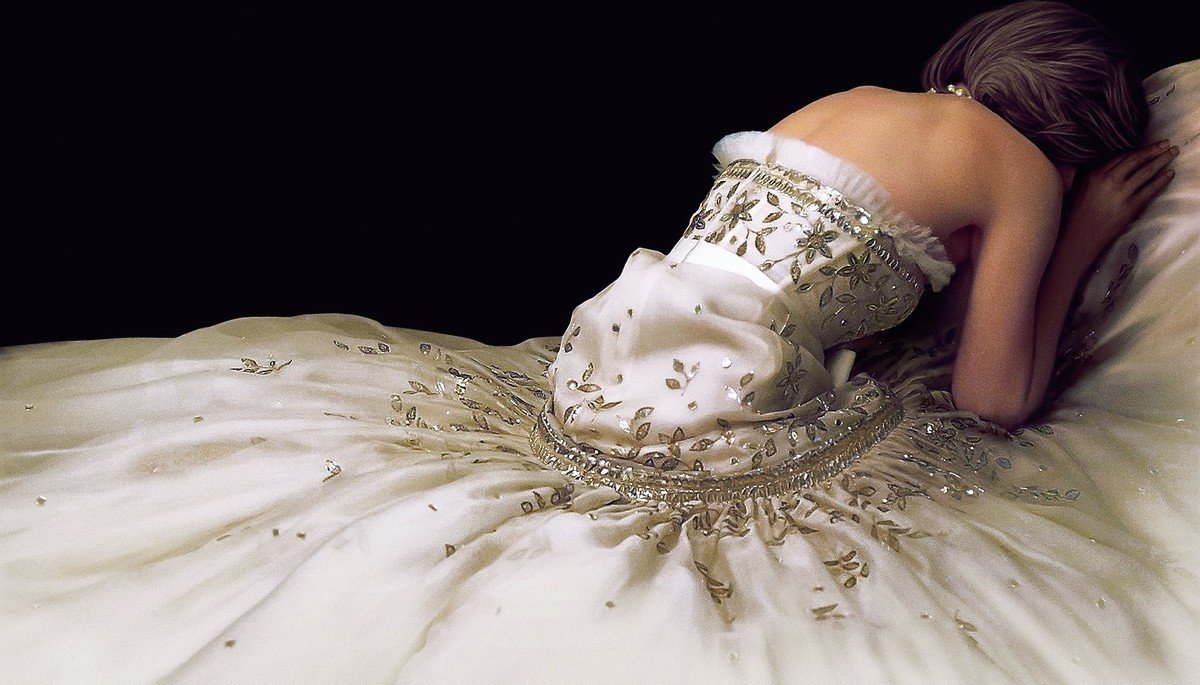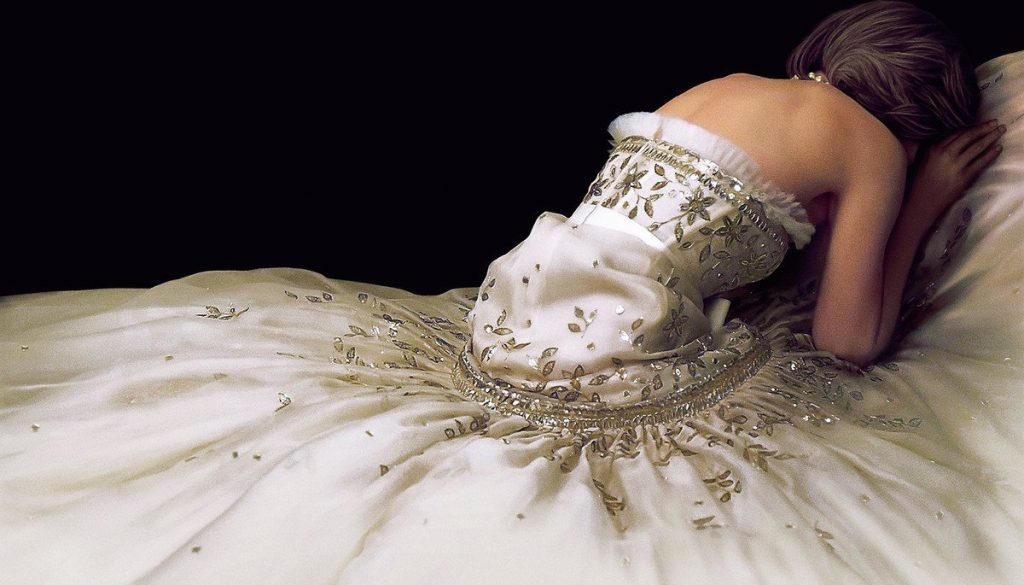

Broody and beautiful to look at, Spencer offers a look at a few days late in the life of Diana, Princess of Wales. Unrelentingly melancholic under an arresting veneer of haute couture, this self-professed “fable from a true tragedy” plays out less like a drama than a single portrait moving through successive frames of immaculately dressed unhappiness.
Played with exquisite, feather-light verisimilitude by Kristen Stewart, the most engaging aspect of the film is the immersion it provides in the lush environs of a three day royal Christmas. Yet from the tight-lipped insinuations about infidelity and paeans on duty to the bulimic episodes and ever-encroaching paparazzi, it is hard not to feel we have seen much of this before.
The most recent seasons of The Crown, for instance, cover much of the same territory, if slightly less luxuriously, also less lugubriously. In the series, too, to its credit, there is a sense of dramatic and relational complexity that exceeds the film’s simple if evocative depiction of Lady Diana as a pretty bird caught in a cage.
Or, to be more precise, a wild pheasant relentlessly run over by a brigade of military trucks. This early image in the film sets the tone for much of what follows.
The drab, soldier-driven vehicles turn out to have been tasked with the special mission of delivering the ingredients for the royal family’s holiday feasts. Crates that might have transported grenades and assault rifles are unlatched to reveal heaps of fresh fruit, lobsters, and other shimmering produce.
The head chef rallies his small army of assistants with Henry V’s “once more into the breach dear friends,” and by this point the symbolic atmosphere is all but palpable. For Lady Diana this Christmas will be war and the dinner table its principal field of battle.
This pungent promise does not deliver with the same power in the playing out, however.
In large part this is probably because neither she nor her relationships really develop. At film’s end, we find Diana as the same woman caught in the same circumstances as when we met her: still beautiful, still trapped, still nostalgic, listless, and lost.
In effect, Spencer presents audiences with a gorgeously photographed, two-hour-extended state of isolation.
Other layers of symbolism keep things intellectually engaging. Diana is repeatedly compared to (and has several hallucinatory encounters with) Queen Anne Boleyn, second wife of Henry VIII who was eventually executed to allow the King to marry another woman (as this film interprets the still contentious history).
Diana also has repeated recourse to places and artefacts associated with her childhood, suggestive either a lingering immaturity or an unextinguished youthful vitality when compared to the rest of the stolid, hidebound members of the royal house.
Indeed, the only glimmers of warmth and pleasure arrive in Diana’s stolen moments of child-like playfulness with her boys, much the rest dedicated to her attempted circumventions of everybody else who are depicted with all the Christmas cheer of pall-bearers processing through age-old ruts as icily and implacably as glaciers.
One more thing worth mentioning is the score, which toys intriguingly with classical motifs overlaid and disrupted by jazz. The latter is associated with appearances by Diana, and by all accounts offers in sonic translation the film’s recurring theme of “venerable” tradition challenged by apparently irreconcilable forces of improvisation and change.
A spectacular representation of its subject, the interest of Spencer’s subject itself would seem to reside, at least as depicted here, almost exclusively at the surface.
Content advisory: some crude language and scenes of near nudity.
